Bigtooth maple (
Acer grandidentatum) is a sugar maple for the inland West. It provides summer shade with a stately rounded crown, has spectacular long-lasting fall color, and provides excellent habitat for songbirds and other small wildlife. Its three- to five-lobed leaves blaze orange to crimson in fall, and its spring bud break, flowers and rosy winged seeds are also lovely.
Native to the western slope of the Rocky Mountains and the high plateau country of the West, bigtooth maple tolerates some drought and alkaline soils. It does need supplemental water in dry areas and doesn’t tolerate extreme summer temperatures in the low deserts.
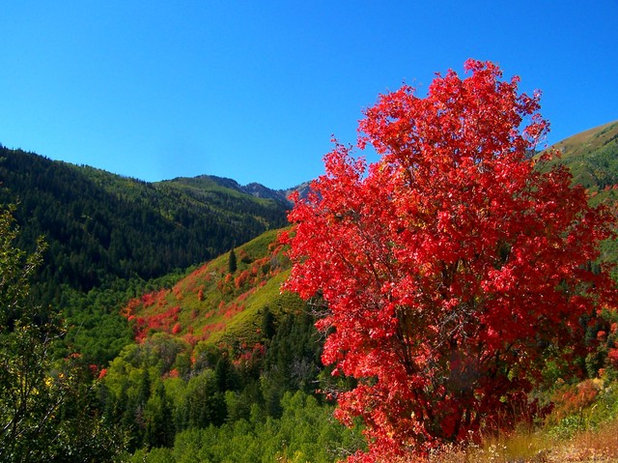
Bryant Olsen
Botanical name: Acer grandidentatum Common names: Bigtooth maple, canyon maple, western sugar maple
Origin: Native to canyons in mountains and plateaus from northwestern Montana to northern Mexico, including southeastern Idaho, southwestern Wyoming, western Utah, southern Colorado, western Texas, and the desert ranges of southwestern New Mexico and southeastern Arizona
Where it will grow: Hardy to minus 30 degrees Fahrenheit, or minus 34.4 degrees Celsius (USDA zones 4 to 9; find your zone)
Water requirement: Needs supplemental water, especially in hot-summer climates
Light requirement: Full sun to medium shade, but not dry shade
Mature size: Up to 50 feet tall and 25 feet wide; smaller varieties, which can be multistemmed, to 25 feet tall
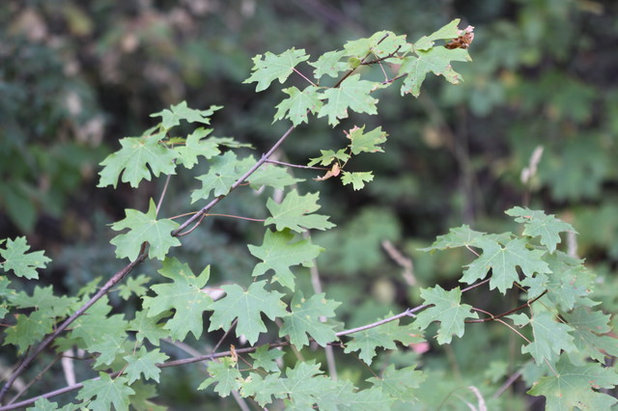 Photo by Andrey ZharkikhBenefits and tolerances:
Photo by Andrey ZharkikhBenefits and tolerances: Tolerates some heat and drought as well as alkaline soils; provides summer shade, habitat for dozens of species of inchworms and moth larvae that songbirds feed on, nest sites for songbirds like goldfinches and orioles, and sap for maple syrup (from mature trees)
Seasonal interest: Red twigs and chartreuse spring leaves with deep lobes, plus yellow-green flower clusters that appear with leaves; deep green summer leaf color accented by samaras (winged seeds); brilliant orange to crimson fall color; gray and platy bark in mature trees; regular opposite branching for interesting winter “architecture”
When to plant: Spring to early summer in northern Rockies; fall in southern Rockies to desert Southwest
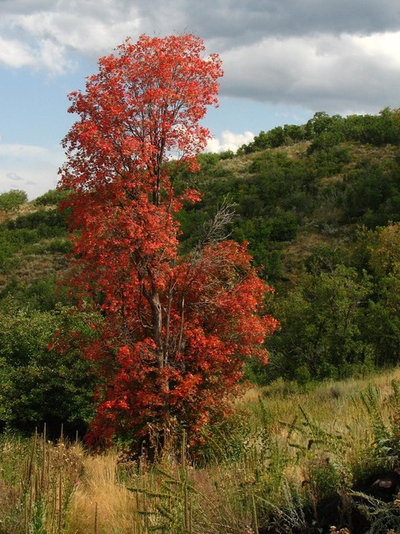
Stones 55
Distinguishing traits. A straight trunk, regular branching pattern and light gray bark distinguish bigtooth maple even before the leaves appear. The leaves have the classic maple shape, with three to five lobes. Bigtooth maple really stands out in fall, when the leaves blaze with colors as bright as those of the eastern sugar maple (
Acer saccharum), its close relative.
Some scientists suspect that bigtooth maple and sugar maple were the same species when deciduous forests were more widespread across the continent in the cooler climates of the late Pleistocene, from 250,000 years ago to some 12,000. When the interior West’s expansive landscapes warmed up, the theory goes, sugar maples were able to survive only in the relatively cool and wet climate of stream canyons in the mountains and high plateaus. Isolated, they gradually evolved into the distinct species now called bigtooth maple.
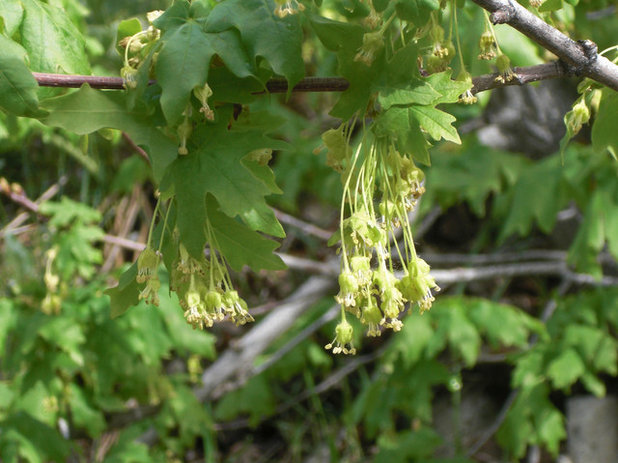 Bigtooth maple flower clusters. Photo by Andrey Zharkikh
Bigtooth maple flower clusters. Photo by Andrey ZharkikhBigtooth maple’s yellow-green flower clusters are quite ornamental for a maple, appearing as the leaves appear. The samaras are rosy-colored at first and then turn green in summer.
Because bigtooth maple hosts dozens of types of caterpillars and inchworms, it provides excellent habitat for songbirds, including goldfinches, warblers, tanagers and orioles. Songbirds feed insects to their young exclusively in summer — a single chickadee pair catches 6,000 to 9,000 insects in raising one brood of young, according to entomologist Doug Tallamy. Native trees have coevolved with native insects to provide better foraging habitat than nonnative trees, which may host very few insects.
The dense leaf canopy of these trees also provides useful nesting and roosting habitat for birds and small mammals, including solitary bats, which are superb insect catchers themselves. The oval to rounded crown shape provides a pleasing form in winter.
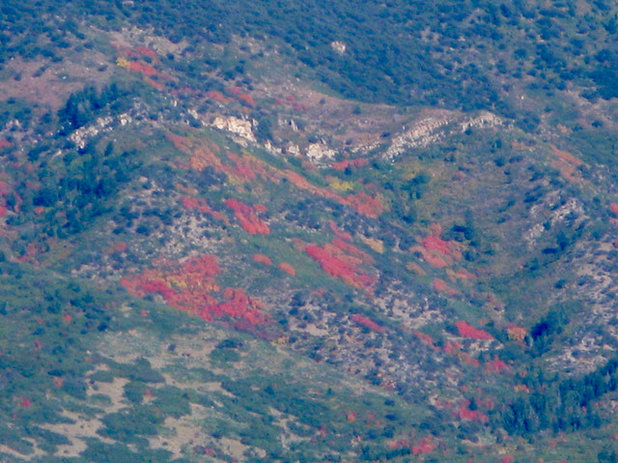
Susan J Tweit
How to use it. Bigtooth maple shines as a specimen shade tree where soils are deep and it receives supplemental water, or in a cluster of smaller multitrunked trees for maximum punch for the fall color and the spring flowers and seeds. It can even be used as a hedge — space small trees about 8 feet apart and expect to trim them regularly to maintain height. In the wild, bigtooth maples grow in clusters or “ribbons” along streams, making for brilliant patches of fall color.
Plant bigtooth maple where its shade will be welcome but won’t interfere with understory gardens. Plan for its eventual size, and don’t plant too close to utility lines or house eaves. Its eventual size and need for watering also make it a poor candidate for parkways, unless they’re as wide as the eventual canopy — 20 to 30 feet — and the soil is amended.
Planting notes. Plant in amended soil where the tree can be watered regularly, including deep-root soaking during dry winter periods. Avoid areas where it will be exposed to de-icing salts, which could kill the tree. Wrap the trunks of young trees to protect them from sunscald.
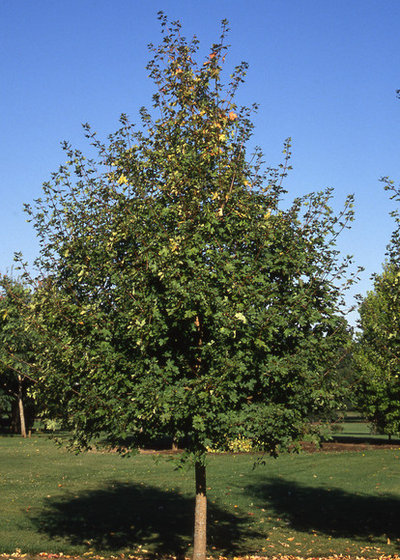
J. Frank Schmidt & Son Co., Wholesale Growers
A smaller variety. Rocky Mountain Glow bigtooth maple (
Acer grandidentatum ‘Schmidt’) tops out at 25 feet high with a crown spread of 15 feet.





